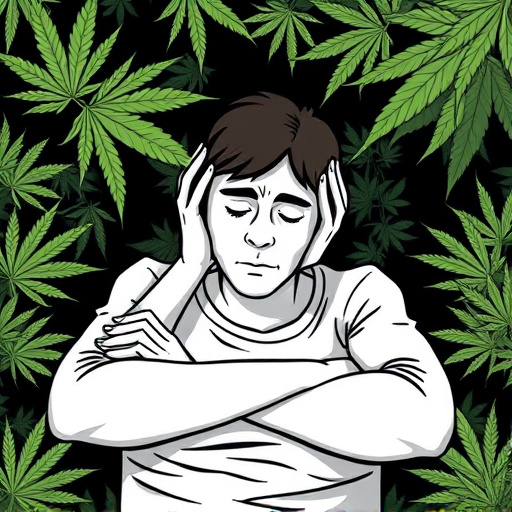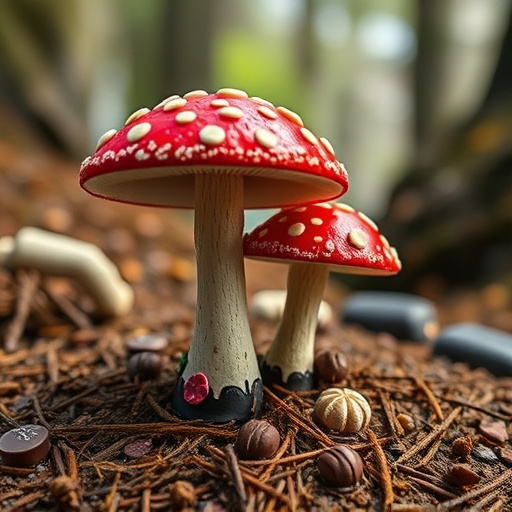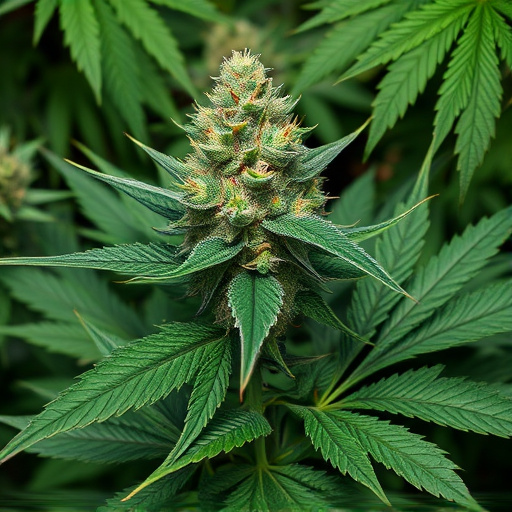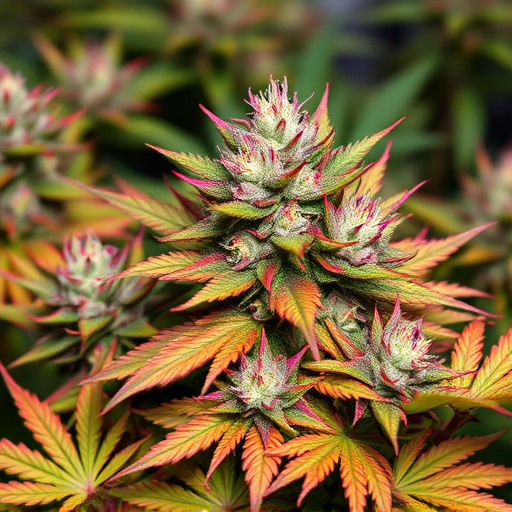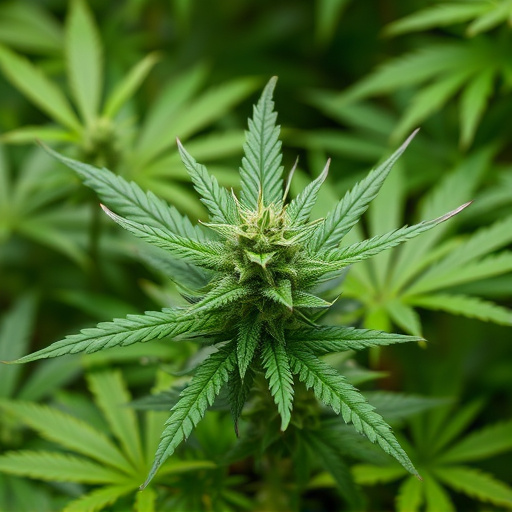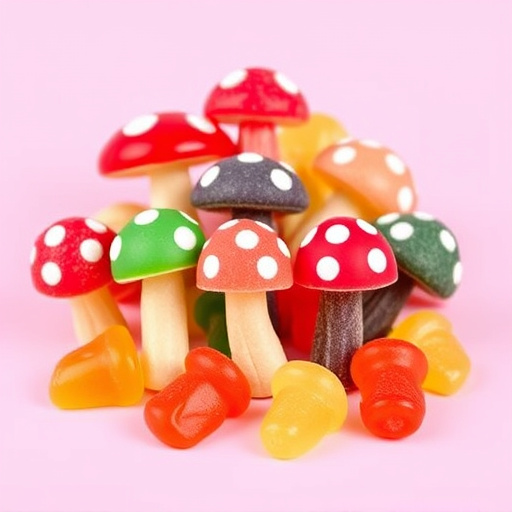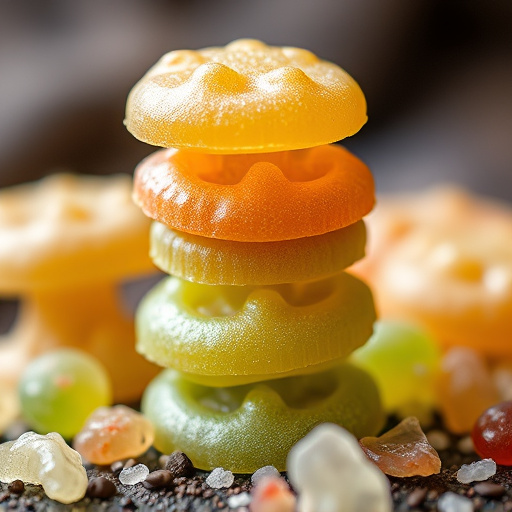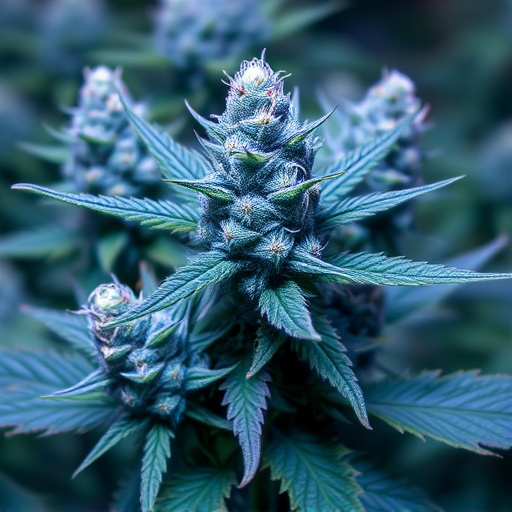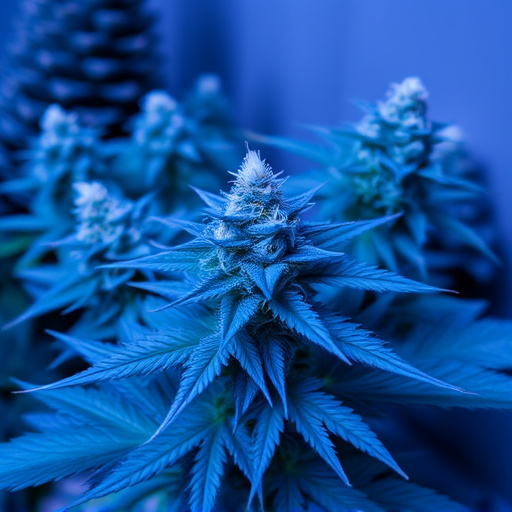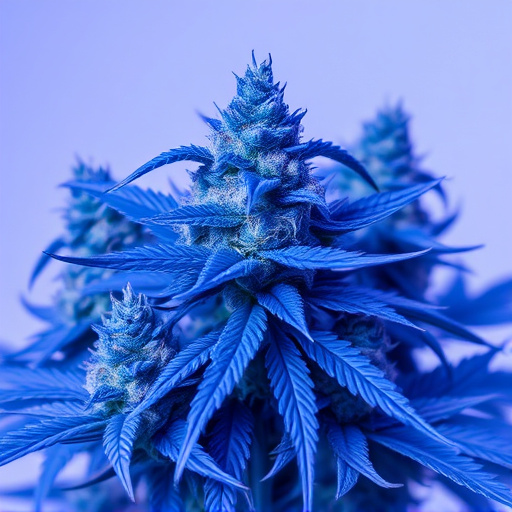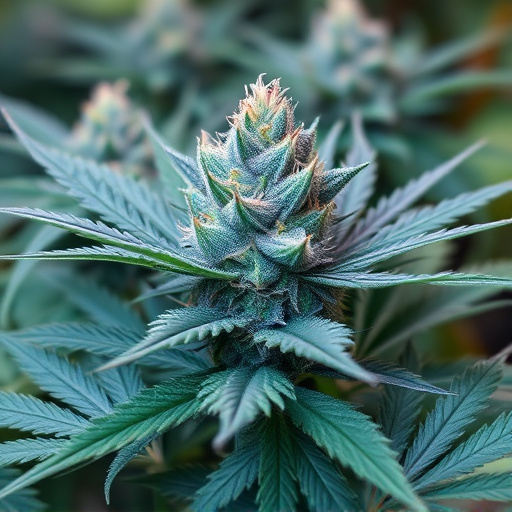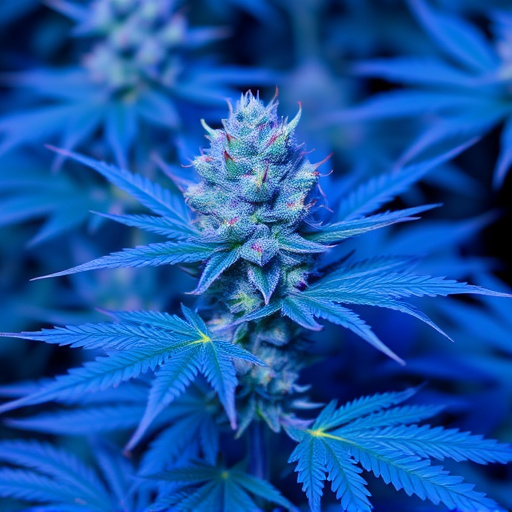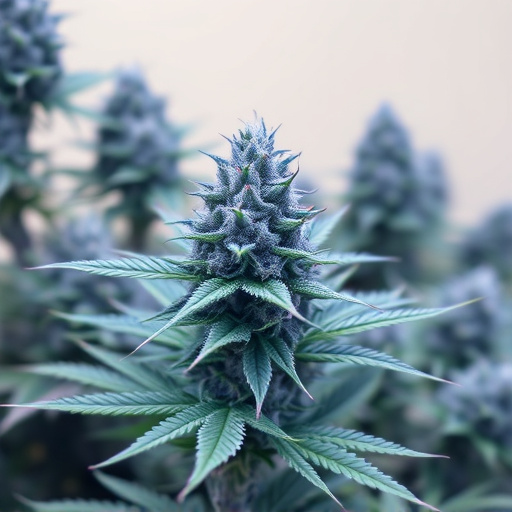Blue cannabis strains are prized for their rare, frosty blue appearance, driven by specific gene variants and high cannabinoid/flavonoid content. These genetic factors, coupled with temperature regulation, lead to enhanced anthocyanin production, resulting in striking blue coloration. Cooler temperatures during growth intensify these hues and preserve therapeutic properties, making blue strains both visually appealing and sought-after by enthusiasts.
Exploring the intricate relationship between genetics and temperature, this article delves into the unique appearance of blue cannabis strains. We unravel the scientific secrets behind their vibrant hue, tracing it from the genetic makeup of specific breeds to their final development in diverse environmental conditions. By understanding these factors, cannabis enthusiasts can gain a deeper appreciation for the variability within this popular plant, with a particular focus on the enigmatic blue cannabis strains that have captivated many.
- The Role of Genetics in Cannabis Appearance: Unlocking the Secrets of Blue Strains
- Temperature's Impact on Cannabis Development: A Fine-Tuned Environment
- Understanding the Science Behind Blue Cannabis: From Genes to Final Product
The Role of Genetics in Cannabis Appearance: Unlocking the Secrets of Blue Strains
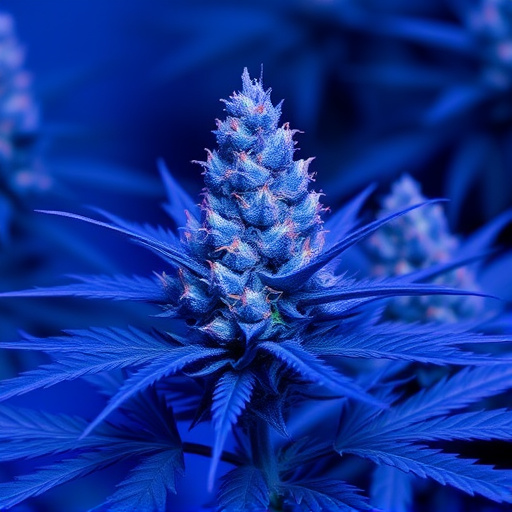
The genetics of cannabis play a pivotal role in dictating its final appearance, from the shape and size of the flowers to the vibrant hues that make certain strains so distinctive. One particularly intriguing phenomenon is the emergence of blue cannabis strains, a rare and sought-after variety. These plants owe their unique color to a specific genetic trait, often resulting from a combination of specific gene variants.
Blue strains are characterized by tiny crystal-like structures that appear on their flowers, giving them a frosty, blue-tinted look. This phenomenon is closely tied to the presence of high levels of cannabinoids like THC and CBD, as well as certain flavonoids known for their antioxidant properties. Understanding the genetic makeup of these strains can help growers cultivate more consistent and desirable blue cannabis varieties, catering to the preferences of enthusiasts who appreciate both the aesthetic appeal and potential therapeutic benefits of these rare plants.
Temperature's Impact on Cannabis Development: A Fine-Tuned Environment
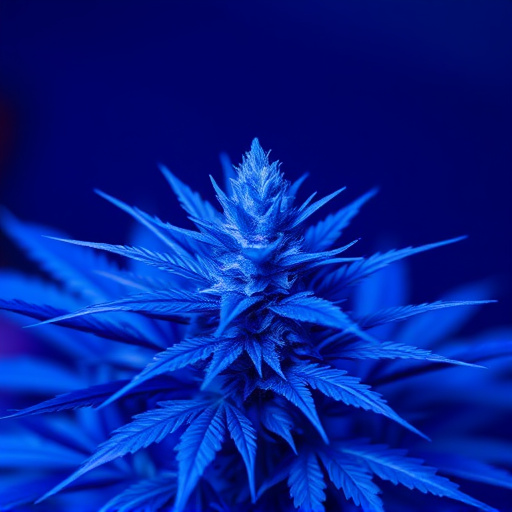
Temperature plays a critical role in shaping the development and appearance of cannabis plants, acting as a fine-tuned regulator in their environment. Optimal warmth encourages robust growth, fostering lush foliage and potentially enhancing the production of desirable compounds like terpenes, which contribute to the unique aromas and flavors of different cannabis strains. However, temperature extremes can significantly impact plant physiology.
For blue cannabis strains, known for their striking coloration, temperature is a key factor in achieving their distinctive hue. Cooler temperatures during specific growth stages can promote the production of anthocyanins, responsible for the blue pigment. This delicate balance ensures that these strains not only look visually appealing but also maintain their unique chemical makeup, contributing to their therapeutic and recreational qualities.
Understanding the Science Behind Blue Cannabis: From Genes to Final Product
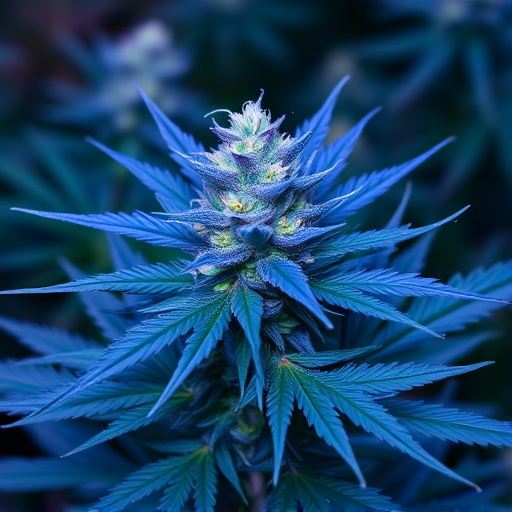
The science behind blue cannabis strains is a fascinating interplay of genetics and environmental factors, particularly temperature. These unique strains owe their distinctive blue hue to specific genetic mutations that affect the production of pigments in the plant. Research indicates that certain genes code for enzymes responsible for synthesizing anthocyanins, a type of pigment known for imparting blue, purple, and red colors in various plants, including cannabis. The final color of the flowers is influenced by the interaction of these anthocyanin-producing genes with environmental cues, especially temperature.
Temperature plays a crucial role in the expression of these genes. Cooler temperatures during the growing period can enhance the production of anthocyanins, leading to richer blue hues in the cannabis flowers. Growers often manipulate temperature and light exposure to trigger these genetic pathways, resulting in striking blue cannabis strains that are not only visually appealing but also offer distinct therapeutic properties due to their unique chemical profiles.
In conclusion, both genetics and temperature play pivotal roles in shaping the distinctive appearance of cannabis, with blue cannabis strains serving as a fascinating example. By understanding these factors, cultivators can optimize conditions to produce desired traits, including the vibrant blue hues that captivate enthusiasts. The science behind these variations expands our knowledge of cannabis, offering a deeper appreciation for the intricate interplay between nature and nurture in this complex plant.
